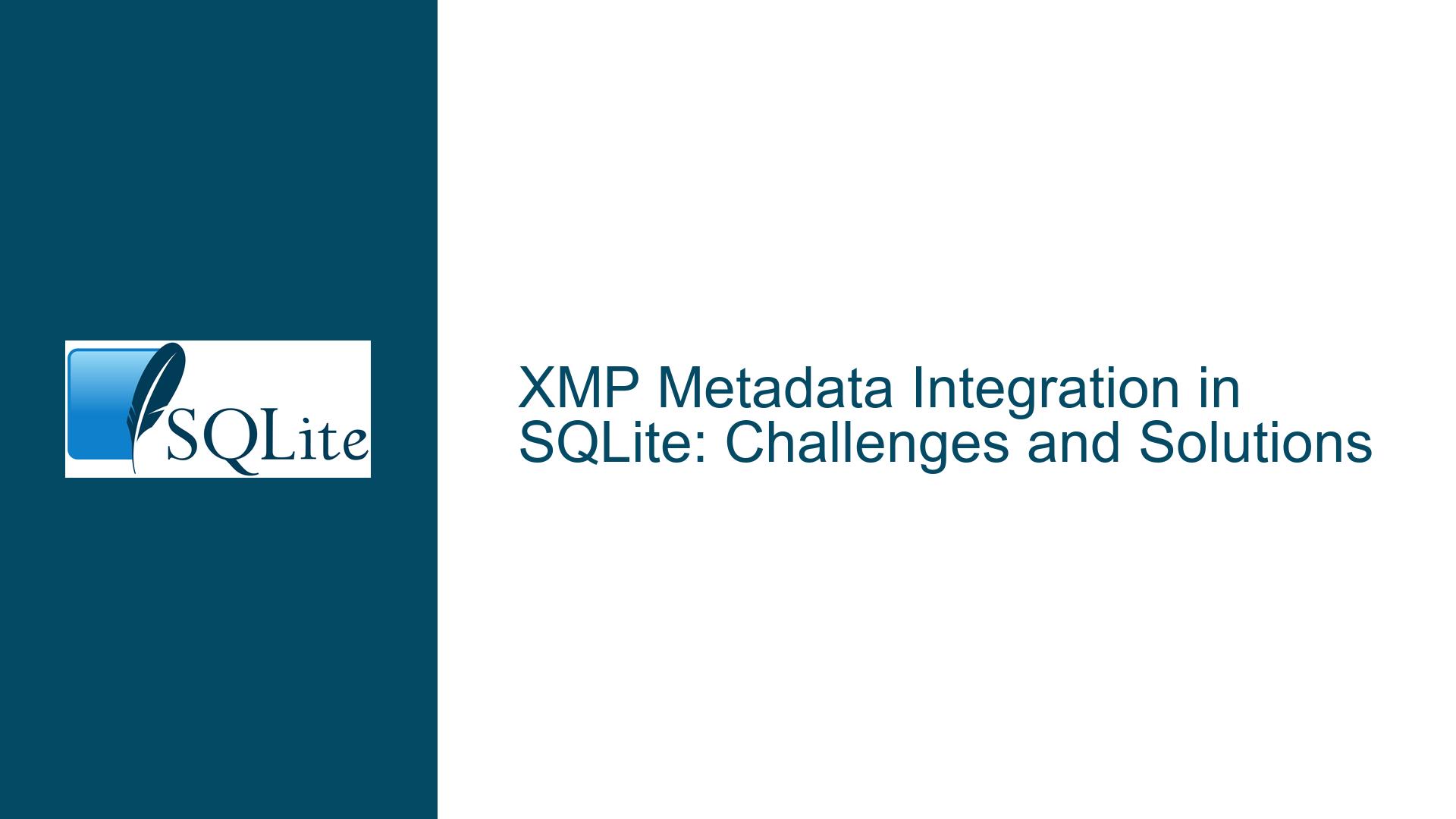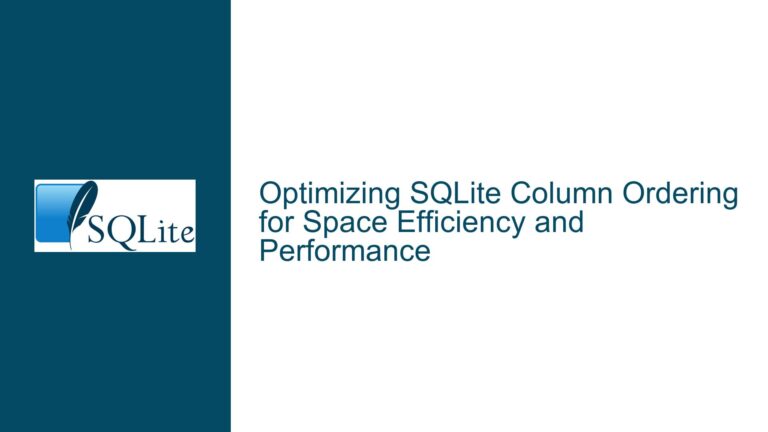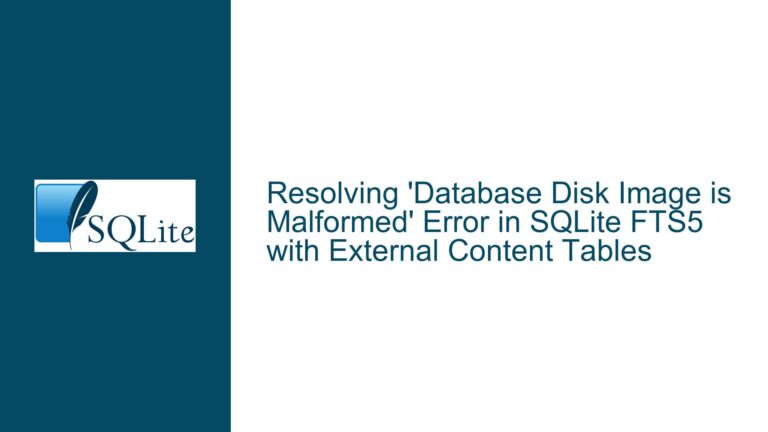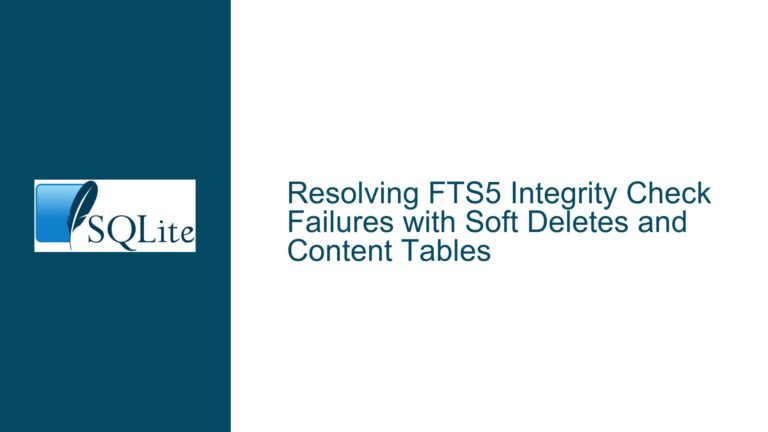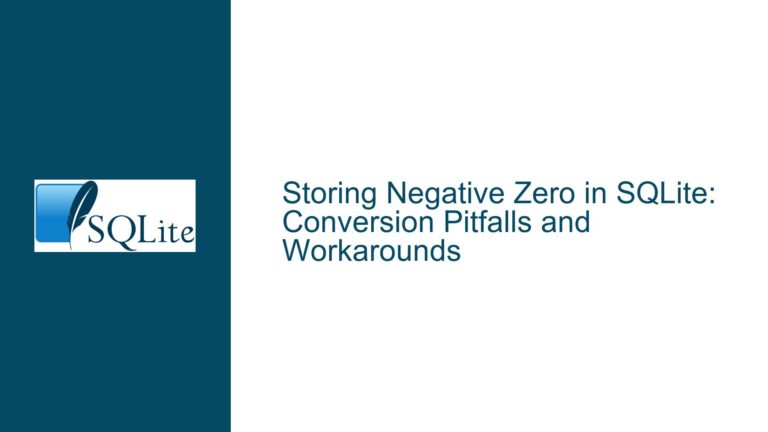XMP Metadata Integration in SQLite: Challenges and Solutions
SQLite File Format Constraints and Metadata Embedding
The integration of XMP (Extensible Metadata Platform) metadata into SQLite databases presents a unique set of challenges, primarily due to the immutable nature of the SQLite file format. SQLite’s file format is designed to be backward and forward compatible, meaning that any changes to the file format could potentially break compatibility with existing SQLite libraries and tools. This constraint makes it impossible to directly embed XMP metadata within the SQLite file without altering the file format, which is not a viable option.
However, the concept of embedding metadata within a database file is not without merit. Metadata can provide valuable information about the database’s contents, such as table names, row counts, and other descriptive details that can be useful for external tools and applications. The challenge lies in finding a method to include this metadata without disrupting the existing SQLite ecosystem.
One proposed solution is the use of sidecar files. These are separate files that accompany the main SQLite database file and contain the XMP metadata. This approach avoids the need to alter the SQLite file format while still providing a mechanism for storing and retrieving metadata. Sidecar files can be easily read by external tools, such as exiftool, which can be extended to support SQLite metadata extraction.
Another approach involves leveraging existing SQLite features, such as the sqlar table, which is used for storing archived files within a SQLite database. By storing metadata in a consistent manner within the sqlar table, it becomes possible to query this information using standard SQLite queries. This method maintains compatibility with existing SQLite tools and libraries while providing a structured way to store metadata.
Metadata Storage in SQLite Tables and Schema Comments
Given the constraints of the SQLite file format, an alternative approach to embedding metadata is to store it within the database itself, using tables or schema comments. This method leverages SQLite’s ability to preserve comments within table definitions, allowing metadata to be embedded directly in the schema.
For example, metadata can be stored in a dedicated table within the database. This table can contain columns for various metadata attributes, such as title, creator, subject, and description. By using a standardized table structure, it becomes possible to query and extract metadata using standard SQL queries. This approach also allows for easy updates to the metadata, as it can be modified using standard SQL commands.
Another method involves embedding metadata within the schema comments of table definitions. SQLite preserves comments that are part of a table definition, making it possible to include metadata directly in the schema. For example, comments can be used to describe the purpose of a table, the author, and other relevant information. This metadata can then be extracted using SQL queries that parse the schema comments.
The use of JSON within schema comments provides an additional layer of flexibility. By embedding JSON-formatted metadata within comments, it becomes possible to store complex metadata structures that can be easily parsed and queried using SQLite’s JSON functions. This approach combines the simplicity of schema comments with the power of JSON, providing a robust solution for metadata storage.
Implementing Metadata Standards and Tools for SQLite
To encourage consistent use of metadata within SQLite databases, it is important to establish standards and provide tools that facilitate metadata management. One proposed standard is the use of a dedicated metadata table with a predefined structure, such as the Dublin Core elements. This table can include columns for metadata attributes such as title, creator, subject, and description, providing a consistent way to store and query metadata.
In addition to establishing standards, it is important to provide tools that make it easy to manage metadata within SQLite databases. This can include command-line tools that automate the creation and updating of metadata tables, as well as libraries that provide APIs for metadata management. By providing these tools, it becomes easier for developers to incorporate metadata into their SQLite databases, ensuring that metadata is consistently used and maintained.
One such tool could be a command-line interface (CLI) command that automates the creation of metadata tables. For example, a .meta command could be added to the SQLite CLI, allowing users to easily create and manage metadata tables. This command could include options for adding, updating, and querying metadata, making it easy to incorporate metadata into existing databases.
Another tool could be a library that provides APIs for metadata management. This library could include functions for creating metadata tables, adding metadata, and querying metadata. By providing a standardized API, it becomes easier for developers to incorporate metadata into their applications, ensuring that metadata is consistently used and maintained.
In conclusion, while the integration of XMP metadata into SQLite databases presents challenges due to the immutable nature of the SQLite file format, there are several viable solutions that can be implemented. By leveraging sidecar files, metadata tables, and schema comments, it is possible to store and retrieve metadata within SQLite databases without altering the file format. Additionally, by establishing standards and providing tools for metadata management, it becomes easier for developers to incorporate metadata into their SQLite databases, ensuring that metadata is consistently used and maintained.
